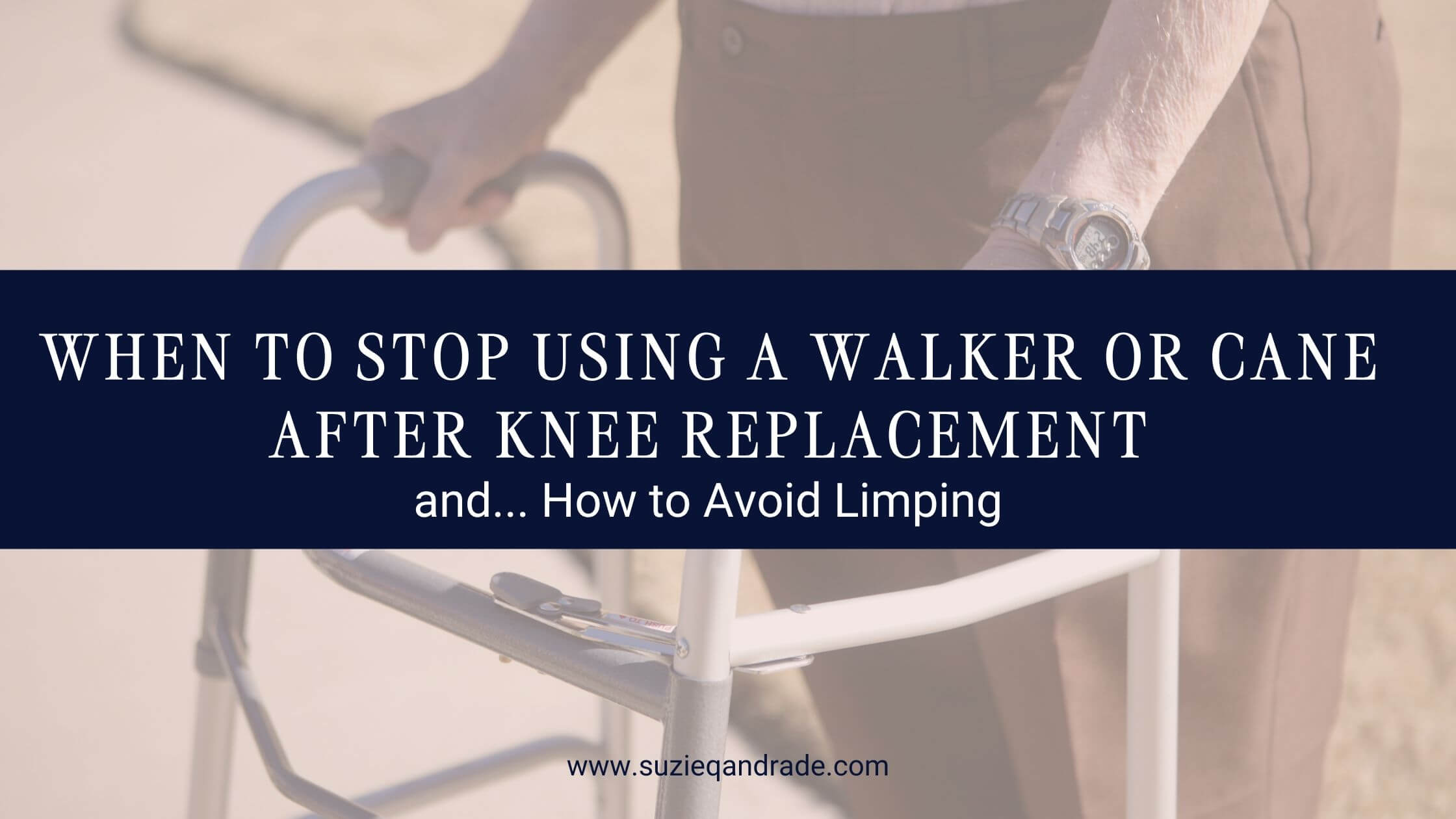
Most of the time, limping months after surgery isn’t about lack of effort. It’s usually because no one reminded you that keeping your assistive device a little longer can actually protect your healing, not hold it back.
My Own Cane vs. Walker Moment
I keep it real and authentic over here so a little of my own story for you! I let go of my walker earlier than I probably should have—because we were throwing a birthday party for my husband with 75 people in our house. I didn’t want to be the one limping around with a walker that day, so I grabbed my cane. As soon as the party was over? I went right back to my walker because it was my security.
I used the walker for less than a week before moving to my cane. And honestly, I only used the cane for maybe a few days before I set it aside. That was my first knee replacement. My second one was a little different, but that first time was the longest I leaned on any device.
The truth is, everyone’s timeline looks a little different—and it’s influenced by what you bring into surgery. If you’ve been living with degenerating joints for years, your muscles may not have the same strength or control as someone who went in stronger. And that matters.
Why This Happens
It’s tempting to see giving up the walker or cane as a huge milestone. And it is—but only if your form is ready. The truth is, your body will always find the “easiest” way to move after surgery. That often means leaning, limping or hunching forward. It feels efficient, but it isn’t effective for long-term healing.
If those shortcuts become habits, they’re hard to undo. That’s why assistive devices matter more than people realize.
What Good Walking Form Looks Like
Before you let go of support, make sure your form is locked in:
- Upright posture (stand tall, don’t hunch)
- Heel-to-toe steps
- Even weight on both legs
If you’ve had a rough day and your knee is tired or sore, that’s the perfect time to grab your cane or walker again. It’s not a setback—it’s smart recovery. Using support to keep your posture correct is what actually catapults your healing forward.
How to Know You’re Ready
Instead of asking, “When can I ditch the cane?” ask, “Am I walking well today?”
For me, I moved from walker → cane → using my kitchen counters. Each step gave me the stability I needed until my gait and posture felt natural again. I never regretted taking it slow.
FAQs About Assistive Devices After Knee Replacement
Is it normal to limp after a knee replacement?
A lot of people do—but that doesn’t mean it’s right. Limping is usually a sign that more rehab work is needed with posture, balance and muscle strength. This is exactly where physical therapy can help get you back on track.
A lot of people do—but that doesn’t mean it’s right. Limping is usually a sign that more rehab work is needed with posture, balance and muscle strength. This is exactly where physical therapy can help get you back on track.
How long should I use a walker after knee replacement?
I’ve seen people use it for a week and I’ve seen people use it for a month. The real question is: how long will it take you to walk with correct form and gait? That depends on how quickly you regain extension and range of motion. (I’ll be writing a whole blog on this soon, so stay tuned!)
I’ve seen people use it for a week and I’ve seen people use it for a month. The real question is: how long will it take you to walk with correct form and gait? That depends on how quickly you regain extension and range of motion. (I’ll be writing a whole blog on this soon, so stay tuned!)
When should I stop using a cane after knee replacement?
A good sign is when you can walk with the cane but not actually lean on it. If you’re carrying it for balance but not putting weight into it, you’re likely ready to let go.
A good sign is when you can walk with the cane but not actually lean on it. If you’re carrying it for balance but not putting weight into it, you’re likely ready to let go.
The Long Game
I’ve seen too many people lose their upright posture for good because they rushed to let go. And it’s heartbreaking, because it’s avoidable. Healing well is always better than healing fast.
So, here’s my Tuesday Tip: The real milestone isn’t when you stop using your cane. It’s when you can walk tall, smooth and strong without it.
Want More Support in Your Recovery?
Healing from knee replacement takes more than exercises—it takes encouragement, good reminders and the right support at the right time.
If this blog was helpful:
- Join my free Facebook group I Am Titanium for ongoing community support, encouragement and real talk about recovery.
- Or subscribe here to get notified when new blogs like this are posted, so you never miss practical tips for your recovery.
You don’t have to figure this out alone. The right tools—and the right people in your corner—make all the difference.
If you would like to hear the Podcast where we dive in deeper, check it out here:


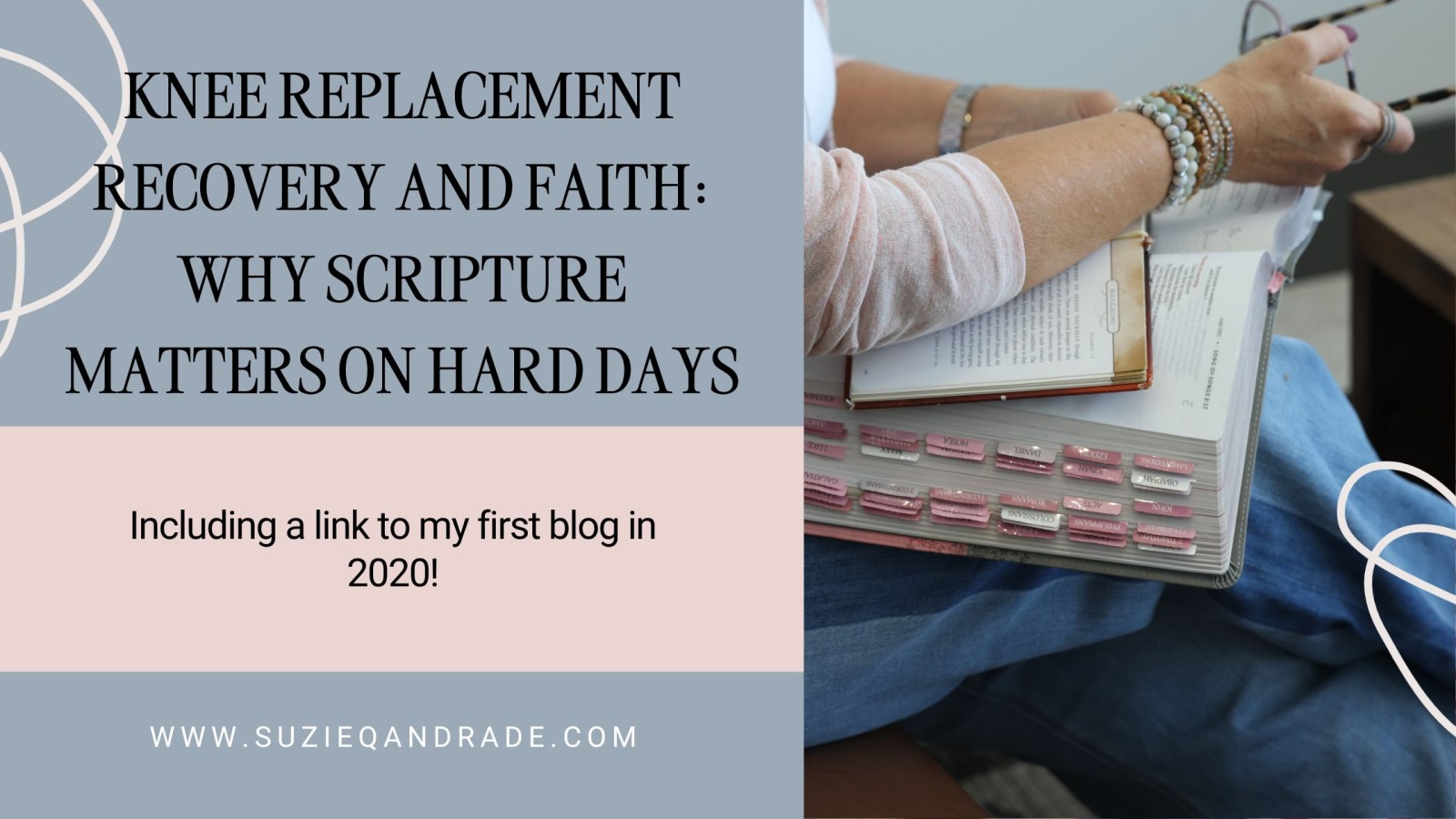







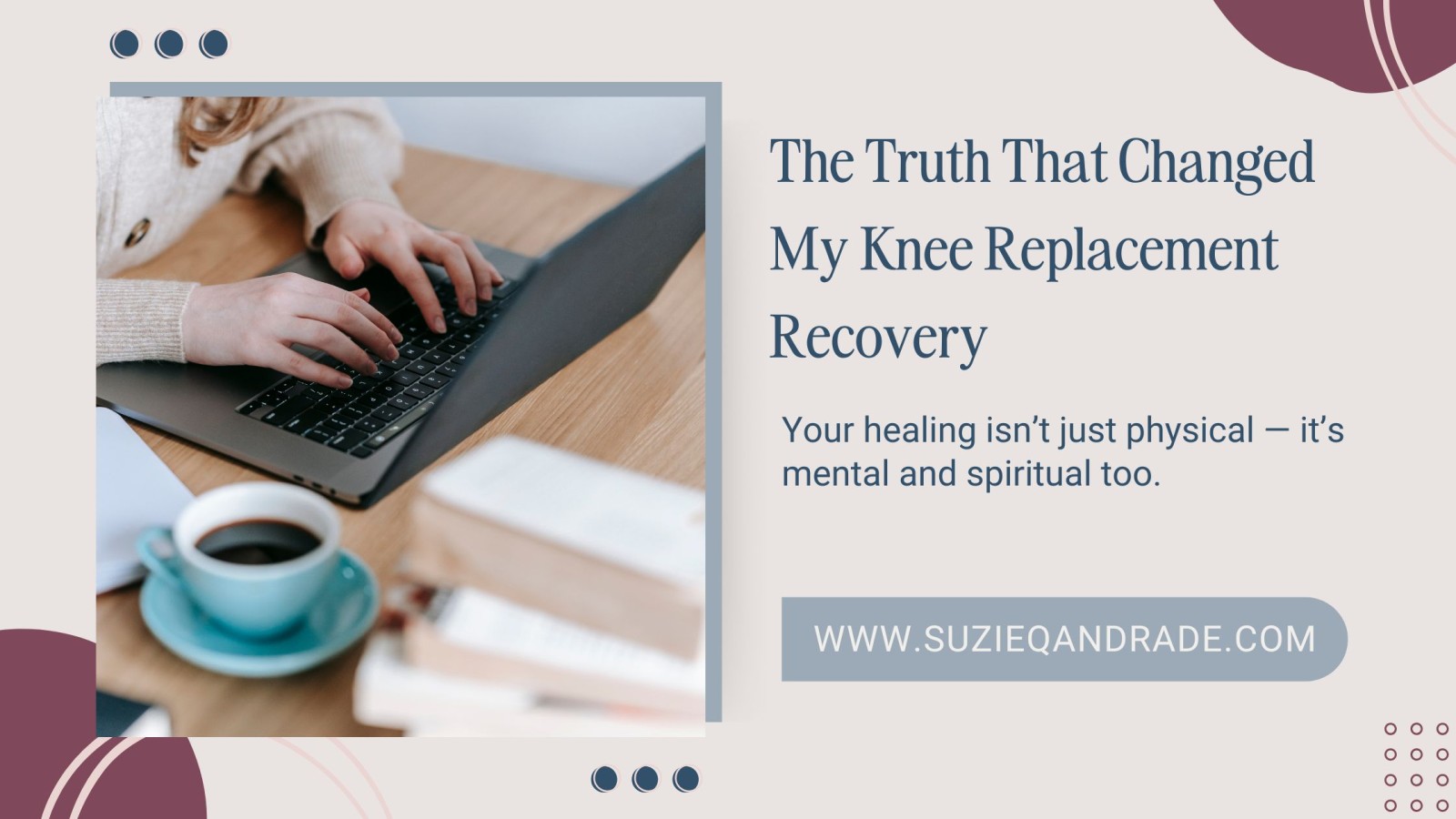
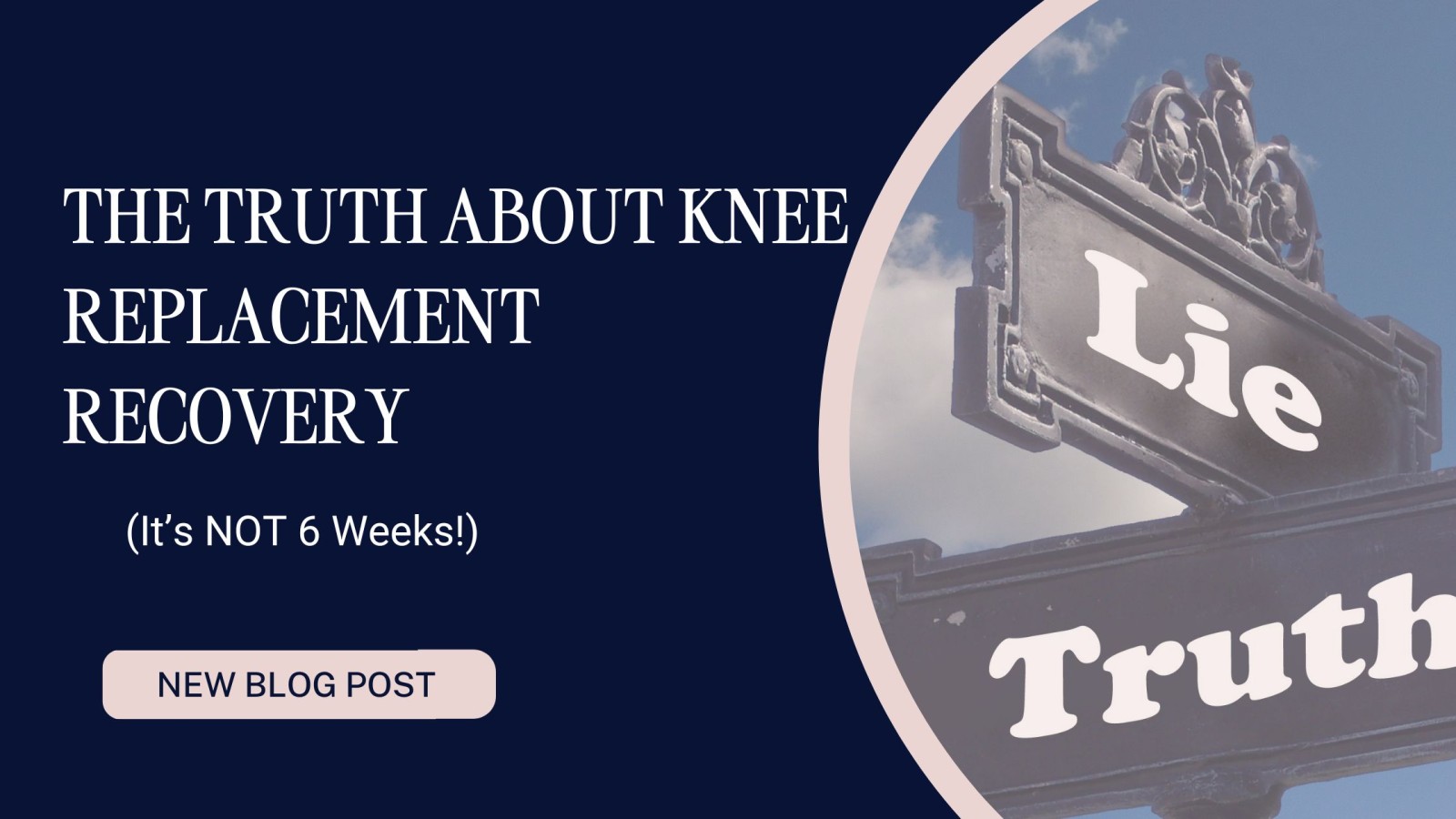

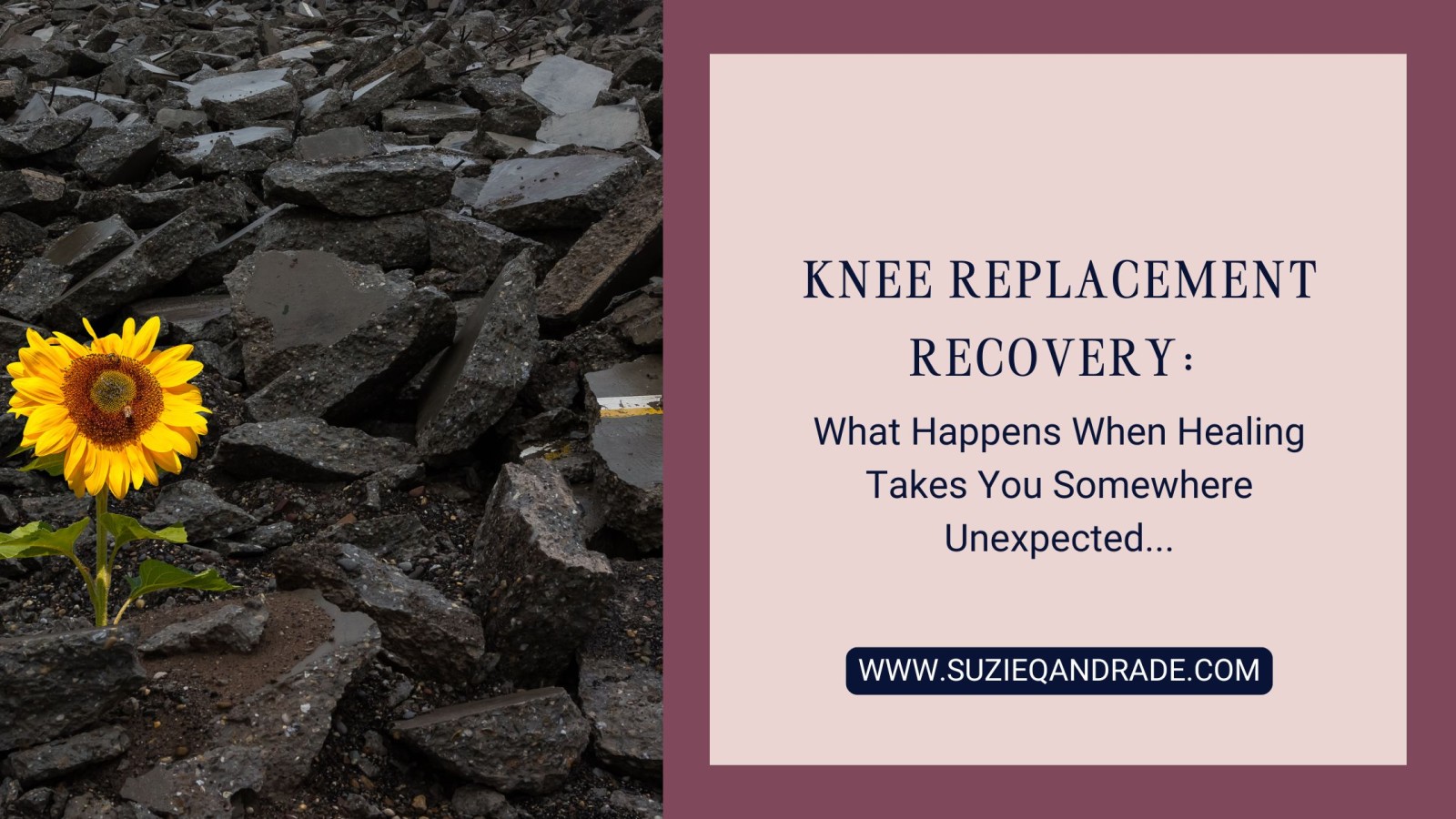
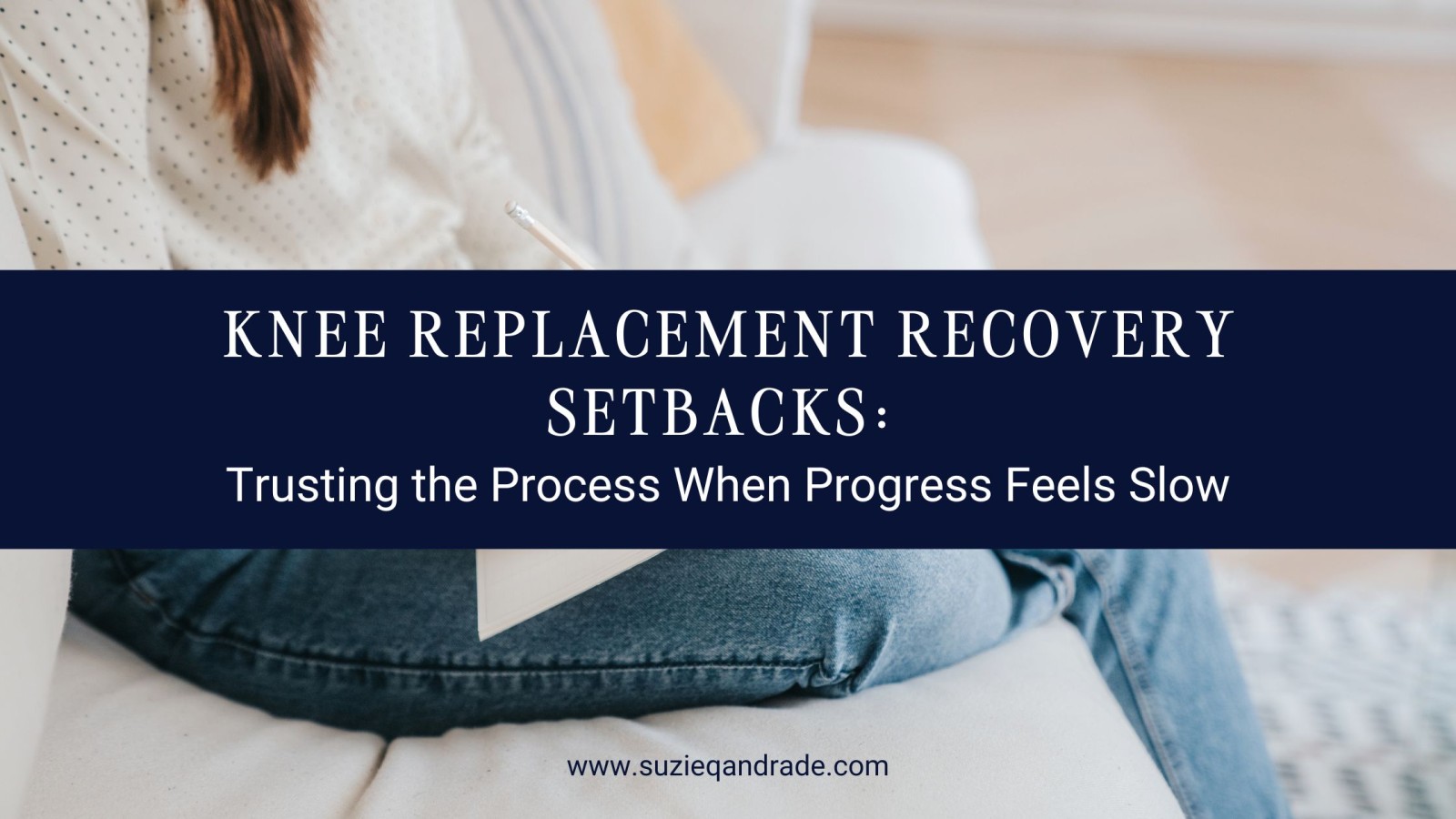






0 Comments